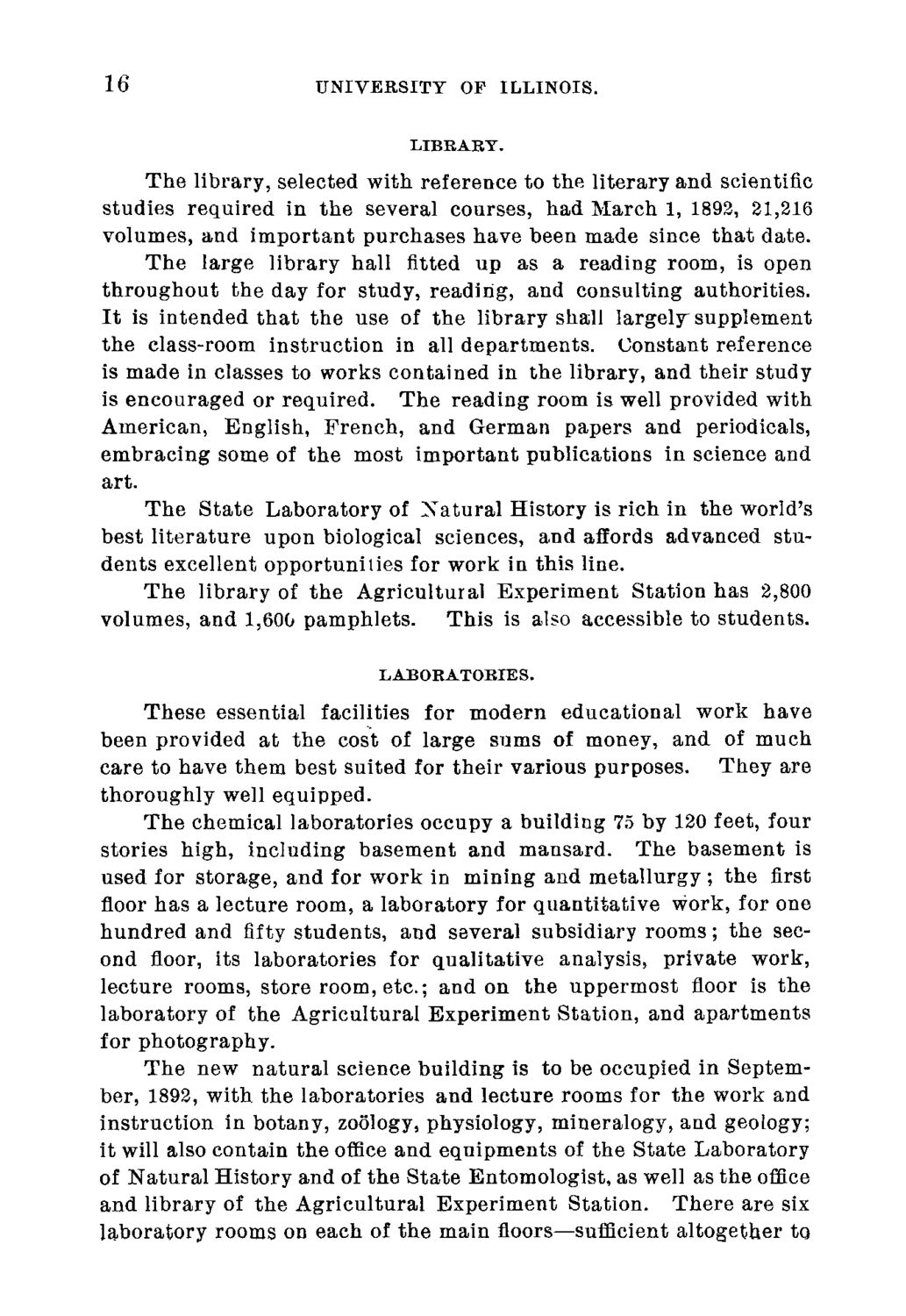| |
| |
Caption: Course Catalog - 1891-1892
This is a reduced-resolution page image for fast online browsing.

EXTRACTED TEXT FROM PAGE:
16 UNIVERSITY OP ILLINOIS. The library, selected with reference to the literary and scientific studies required in the several courses, had March 1, 1892, 21,216 volumes, and important purchases have been made since that date. The large library hall fitted up as a reading room, is open throughout the day for study, reading, and consulting authorities. It is intended that the use of the library shall largely supplement the class-room instruction in all departments. Constant reference is made in classes to works contained in the library, and their study is encouraged or required. The reading room is well provided with American, English, French, and German papers and periodicals, embracing some of the most important publications in science and art. The State Laboratory of Natural History is rich in the world's best literature upon biological sciences, and affords advanced students excellent opportunities for work in this line. The library of the Agricultural Experiment Station has 2,800 volumes, and 1,600 pamphlets. This is also accessible to students. LABORATORIES. These essential facilities for modern educational work have been provided at the cost of large sums of money, and of much care to have them best suited for their various purposes. They are thoroughly well equipped. The chemical laboratories occupy a building 75 by 120 feet, four stories high, including basement and mansard. The basement is used for storage, and for work in mining and metallurgy ; the first floor has a lecture room, a laboratory for quantitative work, for one hundred and fifty students, and several subsidiary rooms; the second floor, its laboratories for qualitative analysis, private work, lecture rooms, store room, etc.; and on the uppermost floor is the laboratory of the Agricultural Experiment Station, and apartments for photography. The new natural science building is to be occupied in September, 1892, with the laboratories and lecture rooms for the work and instruction in botany, zoology, physiology, mineralogy, and geology; it will also contain the office and equipments of the State Laboratory of Natural History and of the State Entomologist, as well as the office and library of the Agricultural Experiment Station. There are six laboratory rooms on each of the main floors—sufficient altogether to
| |